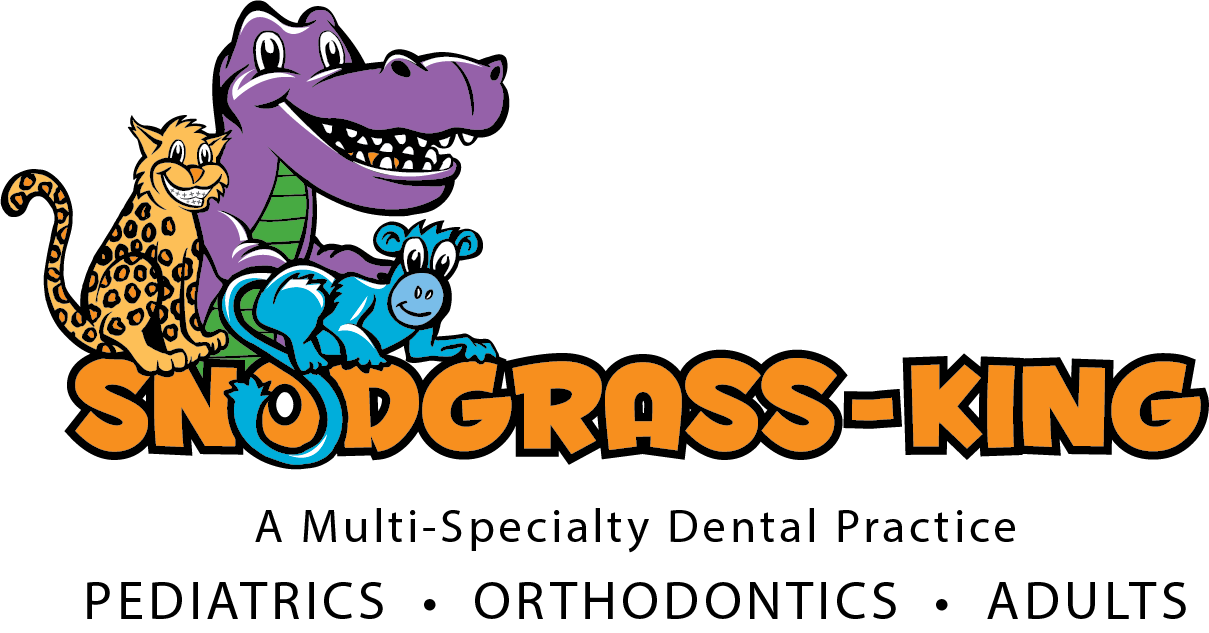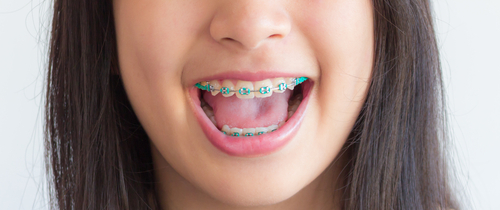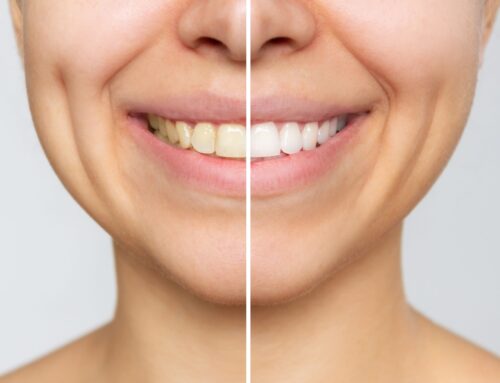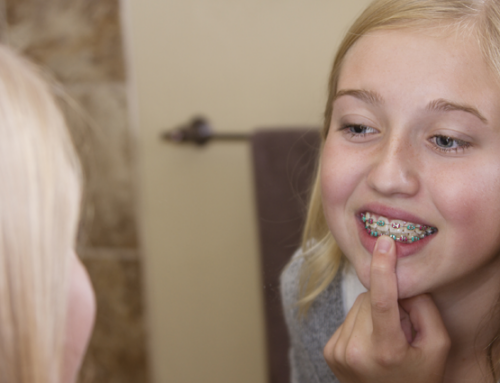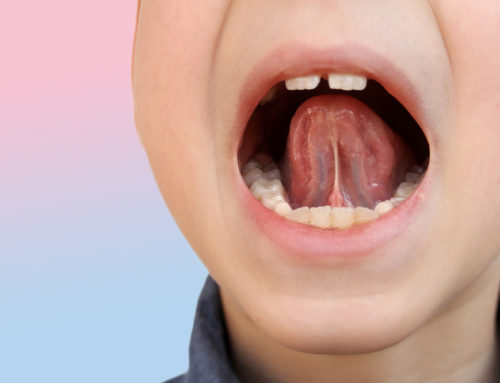Why Do Diastemas Happen?
You may have heard your dentist use the term diastema (pronounced dahy-uh-stee-muh) but not know what it means. Everything has a complicated, hard-to-pronounce medical term, even a gap between two of your teeth!
And simply put, that is what diastema is… a tooth gap!
Children go through many transitions as they’re growing up, which no doubt includes changes to their teeth. It is important that parents are aware of some of the dental conditions that their child might face as they grow, even something as “simple” as a tooth gap.
Today we will explain this common dental condition, what causes it, when it is okay to leave it be, when it might be a concern, and how a dentist can easily treat it!
What Is A Diastema?
Diastema is a clinical term for a gap between two teeth. These gaps can be small or large and could be anywhere, but they are most often noticed when they occur in between the top front teeth.
Diastema can happen in both baby and adult teeth; however, it is more common in baby teeth. This is because children’s mouths are still growing and developing, and their teeth are smaller in size compared to adult teeth. As a result, there may be gaps between the teeth as they emerge.
In most cases, these gaps will close naturally as the adult teeth come in and fill the space. But if the gaps persist into adulthood, they may require treatment from a pediatric dentist or orthodontist.
While seeing a space in front of teeth might seem like only a cosmetic dental issue, diastemas can sometimes be a symptom of something more serious, such as gum disease, and lead to more significant problems if left untreated.
To be safe, it is crucial to alert your pediatric dentist if you see a space between your child’s teeth.
What Causes A Diastema?
There isn’t necessarily a single cause for all tooth gaps. Several things could cause diastema. Reasons even differ depending if it’s baby teeth or adult teeth.
Unless the tooth gap is caused by gum disease, the gap itself is the only sign of diastema. If gum disease is the root cause, you may also notice pain, redness, swelling, or excessive bleeding when brushing or flossing.
Here are some of the most common reasons someone might develop a diastema:
Normal Growth
Diastema is a common occurrence that most dentists view as a perfectly normal dental development that is the result of your child’s natural growth. For example, children that have just had a baby tooth fall out might have a temporary gap until their adult teeth come in. This is common and does not typically require any treatment.
Do keep in mind, however, that you should always get a professional opinion regarding any dental concerns, even something as simple as a space in front teeth. Your pediatric dentist will be able to do a thorough check-up of your child’s teeth and provide guidance regarding whether or not a gap is something to worry about.
Small Teeth
Since our jaws and teeth come in all sorts of shapes and sizes, this can sometimes affect our dental health. In the case that someone’s teeth are too small for their jawbone, there may not be enough space for all of the teeth to fit together properly. This can result in the development of gaps between the teeth, including a diastema.
For example, some people may have small lateral incisors, which are the teeth on either side of the central incisors. If these teeth are too small, space may be left between the central incisors, creating a gap or diastema.
Other similar factors can also contribute to developing a diastema, including the teeth’ position and the jaw’s size. One example would be if the teeth are crooked or crowded, they may push against one another, causing a gap to form.
Similarly, if the jaw is too small, there may not be enough room for all teeth to fit together correctly, leading to gaps or spacing issues.
Oversized Labial Frenulum
A frenulum is a small fold of tissue connecting two body structures. Frenum can be found in various places on the body, such as the eyes, nose and genitalia.
We can see how labial frenulum could be confused with “below the belt” folds of skin tissue, but in the context of oral anatomy, the term labial frenulum refers to the small fold of tissue that connects the inside of the upper or lower lip to the gum tissue.
The frenum/frenulum is a small but important part of the oral anatomy that plays a role in oral health and function. Sometimes this bit of tissue can overgrow, causing it to wedge between your front two teeth. In this case, the wedging could slowly push the two front teeth apart, resulting in a gap.
Gum Disease
Gum disease is typically the only instance where diastema is seen as more than a cosmetic dental concern. Gum disease is a very serious dental condition that can result in gaps or even loss of teeth.
Some common symptoms of gum disease are swelling, redness, bleeding, or tenderness in the area. We will discuss the dangers of gum disease and how it is treated in the next section, but you should consult with a pediatric dentist as soon as possible if there are signs that a tooth gap is a result of gum disease in your or your child’s mouth.
Obstructions In The Mouth
Obstructions could be anything from overgrown tissue and extra teeth to missing teeth, teeth grinding, and even the tongue or thumb. Any of these obstructions can physically prevent the teeth from growing as they should.
For example, in the case of tongue thrusting or thumb sucking, these habits can put pressure on the front teeth, causing them to move forward and creating gaps between them.
Missing or extra teeth can cause the surrounding teeth to shift out of position, creating gaps or spaces between them. And teeth grinding and clenching can put pressure on the teeth, causing them to shift out of place, creating gaps or spaces between them.
The good news is that with regular check-ups, your pediatric dentist should be able to identify obstructions before they become a problem.
Bad Habits
Bad oral habits aren’t limited to skipping out on brushing and flossing and not seeing the dentist for regular check-ups. Bad oral habits can also include what you do with your tongue and how you swallow.
Although you may not think that how you hold your tongue or swallow has much of an effect on your dental health, it’s quite the opposite. For example, many small children habitually push their tongues against their front teeth while swallowing. This repeated motion can eventually cause a small gap between the teeth.
Paying attention to the way you position your tongue and swallow can go a long way in preventing tooth gaps from forming.
How To Fix A Tooth Gap
A gap in front teeth, or anywhere in the mouth, is typically a cosmetic issue that can be left alone unless the aesthetics bother you or your child. However, if the gap is due to something like gum disease, the root cause will need to be treated even if you choose to not fix the gap itself.
When gaps occur in baby teeth, they often resolve when adult teeth grow in. But suppose your adult teeth have a gap that bothers you. In that case, it can easily be treated through orthodontics and other cosmetic dentistry procedures.
Here’s a short list of the most common methods for fixing gaps in teeth. This might sound like a lot of information, but don’t worry; your dentist can help walk you through your treatment options. Simply review the list below and schedule a consultation to discuss which option is best for you or your child.
Diastemas Treatment Option #1: Address Underlying Causes
If a diastema has occurred due to an underlying condition such as gum disease, the infection must first be treated. Gum disease, also known as periodontal disease, occurs when bacteria in the mouth infect the gum tissue, causing inflammation and damage to the surrounding tissues and bones that support the teeth.
Gum disease is a severe condition that can lead to many dental and overall health problems if left untreated. One of the main reasons gum disease is serious is that as the gum tissue and bones become damaged and weakened, the teeth can become loose and eventually fall out. In fact, gum disease is the leading cause of tooth loss in adults.
In addition to tooth loss, gum disease has also been linked to other health problems, such as heart disease, stroke, and diabetes. The bacteria that cause gum disease can enter the bloodstream and travel to other parts of the body, potentially causing inflammation and damage to other organs and systems. Practicing good oral health habits are vital for keeping your gums disease free and in tip-top shape.
Diastemas isn’t quite as serious if the gap is due to an overgrown labial frenum. Your dentist might recommend a frenectomy, which is a simple surgical procedure to remove or loosen some of the excess tissue (frenum.)
This procedure uses a scalpel, scissors, or laser, depending on the individual case and the preference of the treating dentist or oral surgeon. It is usually performed under local anesthesia and can often be completed in just a few minutes.
Diastemas Treatment Option #2: Braces
Braces are often used to position and realign teeth and are frequently used to correct tooth gaps. A dentist or orthodontist can place braces on adult teeth to gently push the teeth together into the correct position over time.
It is not common practice to place braces when a child only has baby teeth, especially in the case of diastemas. But it may be the right course of action when a child has mixed baby and permanent teeth. Your pediatric dentist can help determine if and when braces are necessary or whether alternative treatments are a better fit for your child.
Most picture silver metal when they think of braces. But these days, there are more aesthetically appealing options for braces. Ceramic and lingual braces are great options for a less visible brace, but the most popular choice for most is Invisalign.
Invisalign aligners have become an extremely popular option for adults. Not only do they achieve a similar outcome as traditional metal braces, but they are a lot less visible. For this reason, young adults and office workers often prefer this route to fix dental issues such as gaps.
For a more affordable option, metal braces are still considered a perfectly good option.
Diastemas Treatment Option #3: Dental Bonding
Dental bonding involves the application of a tooth-colored resin material to the surface of a tooth, which is then hardened with a special light, allowing the material to bond to the tooth and create a natural-looking restoration.
Dental bonding is an option for a quick and affordable fix for the aesthetic aspect of a tooth gap.
However, dental bonding is typically only used when a gap is small because, unlike braces, dental bonding is purely for aesthetic purposes and does not physically move teeth. For this reason, dental bonding may not be recommended for large gaps in teeth.
Dental bonding is significantly more affordable than other treatment options for tooth gaps and is often chosen as a more economical alternative.
Diastemas Treatment Option #4: Veneers
Similar to dental bonding but much more complex, veneers are also meant to blend in with your natural teeth and create the illusion of perfect teeth. They can be an excellent option for individuals with gaps between their teeth.
Veneers are thin shells made of tooth-colored materials (usually porcelain or resin composite) designed to cover the front surface of teeth to improve their appearance. They are custom-made to fit each tooth and can not only fix tooth gaps but also improve the shape, size, color, or length of teeth.
The process of getting veneers usually involves several steps, including an initial consultation with a cosmetic dentist to determine if veneers are a good option for the patient, taking impressions of the teeth, preparing the teeth by removing a thin layer of enamel, and then bonding the veneers to the teeth using a special dental adhesive.
Veneers can be costly but can be a smart smile investment. Unlike dental bonding, they are made to be more durable and can last for many decades.
Diastemas Treatment Option #5: Crowns
A dental crown is a tooth-shaped cap placed over a damaged, decayed or otherwise cosmetically flawed tooth. Like veneers and dental bonding, crowns are commonly used to address the aesthetic problems of a tooth gap.
Crowns can be made from various materials, including porcelain, ceramic, metal, or a combination of materials. The choice of material depends on several factors, including the tooth’s location, the amount of tooth structure remaining, and the patient’s preferences and budget.
Getting a dental crown typically involves two or more visits to the dentist’s office. During the first visit, the dentist will prepare the tooth by removing any decay or damage and shaping the tooth to fit the crown. An impression of the tooth will be taken and sent to a dental laboratory, where the crown will be custom-made to fit the patient’s specific needs. In the meantime, the dentist will place a temporary crown over the prepared tooth to protect it.
During the second visit, the temporary crown will be removed, and the permanent crown will be cemented into place. The dentist will check the fit and make necessary adjustments to ensure the crown is comfortable and functional.
With proper care and maintenance, a dental crown can last for many years, providing a durable and long-lasting solution for various dental concerns, including tooth gaps!
Can I Close A Gap Between Teeth At Home?
If you notice that you or your child has developed a large gap between two teeth, you should not automatically assume it’s “not a big deal” or attempt to correct the issue at home. It is important to consult with a qualified dentist. Most of the time, your dentist can recommend a simple and affordable diastemas treatment plan.
If the gap is normal for your child’s age and is simply due to losing a baby tooth, the recommendation may be to wait. Regardless, it would be best to have the issue checked out by a dentist. At-home dental treatments are not only ineffective, but they can also be extremely dangerous.
Following good oral health habits is the best way to care for your child’s teeth at home. Daily brushing and flossing go a long way toward preventing cavities and gum disease that can cause tooth caps.
Even eating habits can be modified to serve your teeth better. For example, consuming less sugar and brushing your teeth right after eating are great ways to protect yourself against harmful bacteria.
Additionally, you still need a professional to perform cleanings and check-ups for you and your child. Visiting your dentist every six months reduces the risk of a major dental problem going unnoticed.
Pediatric Dentist Near Me
Have you noticed a gap in your child’s teeth? If so, don’t wait – bring them in for a check-up with a pediatric dentist as soon as possible. The earlier your dentist can look at the issue, the better.
Here at Snodgrass-King Dental, we’re happy to offer a team of experienced dentists that can take care of your child. Not only can we perform a cleaning and evaluate the issue, but we will also do everything in our power to ensure that your child is as comfortable as possible.
The best part? We actually offer dental services for children and adults. This means we can become the go-to place for all your dental needs. Snodgrass-King Dental offers services such as sealants, crowns, cleanings, teeth whitening, extractions, fillings, and much more.
Snodgrass-King Dental has offices all throughout the Tennessee area. Whether you live in Nashville, Cool Springs, Franklin, or Mt. Juliet, we have an office near you. Don’t hesitate to reach out to our team if you have any questions whatsoever. We’ll be more than happy to help.
Call or fill out our online form today to book your first appointment.
